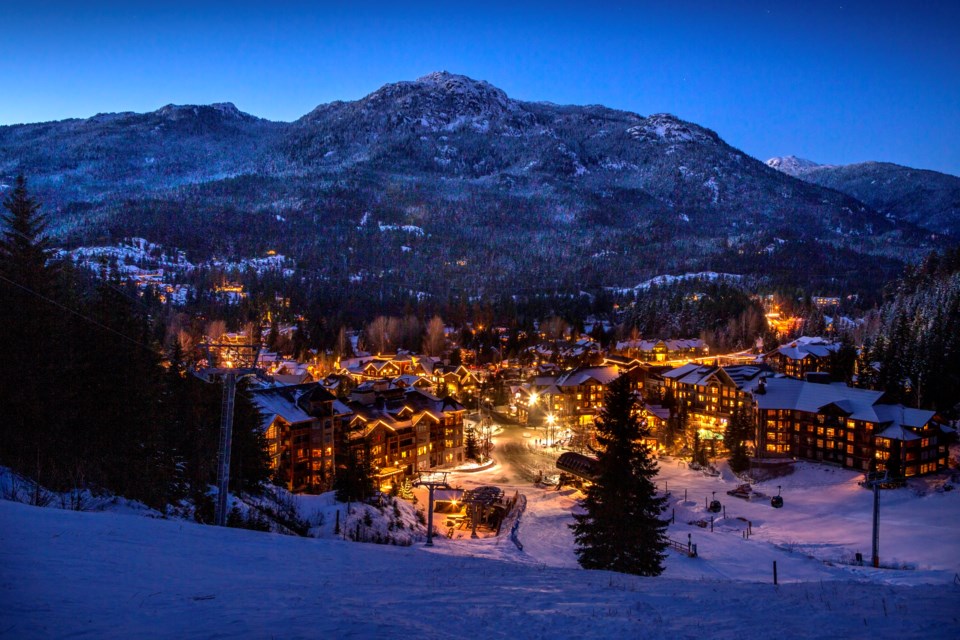Whistler’s population might be growing, but its housing supply isn't keeping up, according to the 2021 census.
Recently released data shows the total number of private dwellings in Whistler fell from 10,507 in 2016 to 10,065 in 2021. Meanwhile, the number of private dwellings in the resort occupied by usual residents—in other words, houses or apartments that serve as their occupants’ permanent address—rose from 4,612 in 2016 to 5,597 last year. Whistler’s average household size held steady, however, at 2.4 people in both 2016 and 2021.
The majority of residents (1,660) lived in single-detached dwellings in 2021, according to the census. The second most common type of dwelling in Whistler was a row house, with 1,470 locals calling one home. Additionally, 1,375 residents lived in an apartment in an under-five-storey building; 565 lived in a duplex apartment; 470 lived in a semi-detached home; and 15 people resided in an apartment building higher than five storeys. In the 2021 census, Whistler residents—five, in total—also reported residing in moveable dwellings, up from 0 in both the 2011 and 2016 censuses.
“Who are those usual residents? Because one of the things I’m hearing is that we’re getting people moving up here that are retirees, people that are working remotely,” said Whistler Councillor Cathy Jewett, chair of Communities That Care Whistler. The non-profit organization uses community research, like its Youth Surveys, to promote positive development in Whistler’s children, youth and young adults.
“Anecdotally, what we’re seeing is people are losing rental housing,” she added. “It breaks my heart—we’re losing some really good people.”
The drop in number of private dwellings comes despite the Resort Municipality of Whistler’s (RMOW) efforts to add 1,000 new resident-restricted beds; a target municipal officials set in 2017. Work in this department has been steadily progressing ever since, including the new Whistler Housing Authority developments in Cheakamus Crossing.
But where did those dwellings go? A housing needs report presented to Whistler council on Tuesday, May 10 offers a hint: “Whistler’s rental units in market residential housing have decreased over time as older homes are redeveloped or no longer made available, counteracting efforts to increase availability of employee restricted rental units,” the report from RMOW staff read.
Whistler's average age bumps up to 37.9
The new census data, published April 27, also provided insight into the age of Whistler’s community, which appears to be getting older.
The average age of a Whistlerite rose slightly, to 37.9 in 2021—up from 36.3 years in 2016. It’s still significantly younger than B.C.’s 2021 average age of 42.3, and the national average, which hit 41.1 in 2021.
Broken down by sex, 7,510 men lived in Whistler in 2021—representing 53.7 per cent of the community’s population—compared to 6,470 women.
People aged 65 or older also made up a bigger portion of Whistler’s community in 2021—nine per cent, to be exact. That’s up from the seven per cent of Whistlerites who fell in that age category in 2016. Last year, 11.1 per cent of Whistler’s population were aged 14 or younger, compared to 12.5 per cent in 2016.
Several factors could be playing a role in the growth of Whistler’s senior population, Jewett explained. “I’m part of the earliest waves of locals,” she said. “I got here in the ’70s, and a lot of my friends are leaving, but some are staying and they’re not getting younger. The boomers are aging—we know that.”
Whistler also hasn’t seen as many working holiday visa holders moving into the resort as it did pre-pandemic, Jewett added. “I don’t know if they would have been [included in the census] or not, but if they had, they may have affected those earlier numbers.”





.jpg;w=120;h=80;mode=crop)